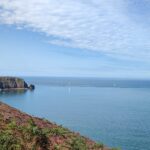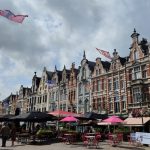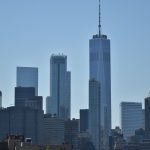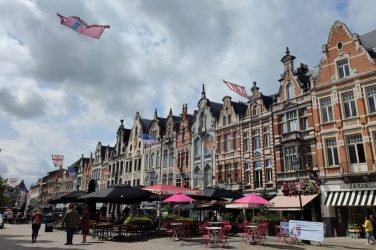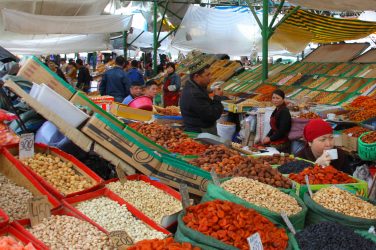Summer is nearly over, but how about an autumn bike ride through the historical cities of the Italian region of Umbria? E&M‘s author Marta Montanari takes us on a journey between Bevagna, Assisi and Spoleto and shares some insider tips on each city.
Italian summers are known to be warm and sunny. Even if this year many places have had their quirks and twists, and summer kicked in a little later than usual, it was still as pretty as a postcard and very warm.
After a good three months of summer, I usually really look forward to the month of September, when temperatures go down a little bit and weather is still enjoyable. Two ingredients that allow you to experience a whole other bunch of activities in the countryside and, for whom hasn’t been on holiday yet, the opportunity for a special break from daily life.
My go-to place in September is a region called Umbria. Right in the center of the country, it’s one of the few landlocked regions. With an incredible food tradition, it’s known for its natural parks, historical sites and art, as well as the many international festivals taking place all year long.
However, after a few visits, I discovered more. Umbria is actually very popular for its many bike routes, available to meet different levels of experience and needs. Wether you are an athlete or, like me, you just enjoy strolling around on your bike, here you will definitely find a fitting tour.
Even if I haven’t managed to complete it by bike, my favorite route connects three towns and offers a great view of the Subasio Mountain. Here is where the Assisi-Bevagna-Spoleto tour starts.
Assisi
Known to be the birthplace of San Francesco and Santa Chiara, Assisi became UNESCO World Heritage Site in 2000 because of its history, art, and architecture.
Walking around this little town, you will pass through small streets and pretty little houses. On one side you can admire the architecture that resisted through the centuries, from its Roman origins to wars and the daily life of modern times. On the other side, natural landscapes will unfold in front of your eyes. This is actually an established protected area called Mount Subasio Regional Park.
If time is short, and you have to pick some stops, the temple of Minerva, the amphitheatre, Palazzo dei Priori and the beautiful Basilica of San Francesco should be on your bucket list.

In particular, the Basilica is a unique piece of art. From the outside, you’ll be guided into a breathtaking experience. Once you step in, you will notice a simple, yet magnificent, decoration and structure. This gives the church a mystical aura, which might be not easy to appreciate elsewhere. The whole structure is actually made of two churches, a lower one, built around 1228-1230, and an upper one, built around 1230-1253. Inside it hosts some of the most famous paintings realised by artists like Cimabue and Giotto. If you love art and history, this is definitely the place to go, to have an experience that can otherwise be hardly described.
Bevagna
Back on our bikes, you will get deeper into the region, passing through so many beautiful sunflowers fields and vineyards, that you might want to stop for a while just to admire the tranquility and beauty surrounding you. While going around the hills, your eyes will be surprised by something unexpected: a medieval village.
Rich in history, many of the houses in Bevagna have ancient origins. It is said that some can be traced back all the way to the Roman times. The very first historical news about Bevagna dates back to the battle of Sentinel in 295 BC. In Roman times, the village was strategic because it was located right in the middle of the the ancient via Flaminia (220 BC), connecting the city of Rome to Rimini.
It’s like buildings were magically brought back from a different time, with old architectures surrounding every corner, and little personal touches made by the people living there to bring the scene to life.
When entering the city, you will walk over what used to be a small river port. After only a few steps in the city – once you passed the medieval walls – you will immediately get the incredible atmosphere reigning there. It’s like buildings were magically brought back from a different time, with old architectures surrounding every corner, and little personal touches made by the people living there to bring the scene to life. From the shutters made in wood to the splash of colors given by the flowers at the window, it can easily seem like being in a water-colours painting. And, while absorbed by this step into a different age, some bits of modern times will bring you back to the present. While cats are peacefully looking around enjoying some fresh air under the shades of a tree, people walk up and down for some daily shopping or just to get a coffee at the local cafeteria. The school bus will arrive in the main square to let the kids out and, just like that, the past and the present will easily melt together in an exceptionally perfect mix. I will never forget how beautiful it was to wake up early in the morning, head to the cafeteria for my cornetto and caffè, and enjoy my time reading a book surrounded by so many beautiful buildings.
Bevagna has a lot to offer to a visitor. You can visit important cultural sights, such as Palazzo dei Consoli (1270), which hosts the theatre Francesco Totri, and the churches of San Silvestro and San Michele Arcangelo. If you have time, take a walk through the smallest streets, look around, and check for hidden views of the surrounding hills. You won’t regret the extra steps.
Go down to the river, and you will see the old “lavatoio” and then take a walk all around the city wall to enjoy the full experience. If you are hungry, there are many places you can go to experience the local cuisine and if you love shopping, Bevagna has some lovely stores with unique handmade creations, jewellery designers and food products.
Spoleto
Spoleto is the last destination of our short tour. Known today for its cultural heritage and art events, it became a Roman colony around the 90 BC and later conquered several times through the centuries. Walking around the city center you are still able to spot the Roman heritages mixed with the medieval appearance.
All around town you can admire an amazing architecture, but my all-time favorite spot is the Ponte delle Torri, a proper symbol of this city.

Walking down from Piazza Campello, it will appear in front of you in all its beauty. The structure, made from local limestone, is 230 metres long, has ten arches, two main pillars and it connects Sant’Elia hill to Monteluco. Even though there isn’t much information about its construction, it is thought it was built between the 13th and 14th century with the purpose of unite the fortress (on Sant’Elia hill) to the Mulini fort (Monteluco) and to transport water to the city from the Cortaccione springs. From here you will really get an incredible view!
Another must see is the Duomo of Spoleto. From Piazza Duomo you will already appreciate the position of the building. The ancient origins of the cathedral go back to the12th century, and the light stone used to build it reflects the sun and makes the architectural stile of the facade even more beautiful.
Like other cities in Umbria, there are many sights you can visit here but, if you are a little tired, Spoleto has a lovely main street where you can enjoy some delicious gelato while looking at the shops and buy some local products.
In any case, whether you decide to do the full journey by bike or you decide to mix and match with a car or a train, this region is the perfect destination. If you are looking for a romantic retreat or just some time off, this area gives you an all-in-one offer that allows you to spend a lot of time outdoor and in a beautiful natural park. A peaceful atmosphere not too far away from your doorsteps.
Cover photo: courtesy of Marta Montanari.



